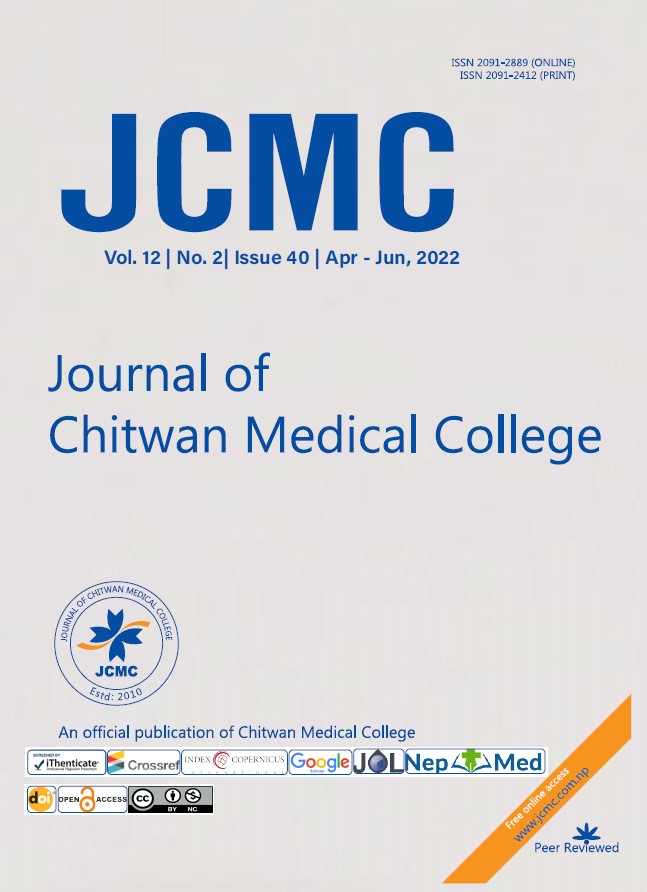TRANEXAMIC ACID IN REDUCING BLOOD LOSS IN PROXIMAL FEMUR FRACTURE SURGERY: AN OBSERVATIONAL STUDY
Keywords:
Blood Loss, Fracture Fixation, Hematocrit, Saline Solution, Tranexamic AcidAbstract
Background: Blood transfusion during orthopedic surgery is associated with different types of complications. The goal of this research was to observe if tranexamic acid could help in reducing perioperative blood loss after proximal femur fracture surgery.
Methods: At Shree Birendra Hospital, a total of 60 patients with proximal femur fractures participated in this one-year observational study. The study group (n=30) received 1g intravenous tranexamic acid at induction of anesthesia, whereas the control group (n=30) received intravenous normal saline. Using a proximal femoral nailing device, all patients underwent closed reduction and internal fixation. Preoperative and postoperative hematological parameters, as well as intraoperative blood loss were measured. Patients were followed up till the third day for the need of blood transfusion. Statistics Program for Social Sciences version 20.0 was used to analyze the data.
Results: The study’s preoperative hemoglobin and hematocrit were 10.5±1.43gm/dl versus 10.9±1.2gm/dl and 31.5±4.19% versus 32.7±3.6%, respectively, compared to the control group. In the study versus control group, the values were 10.1±1.0gm versus 9.9±0.8gm (p=0.01) and 30.3±3% versus 29.7±2.4% (p=0.03) on day one and 10±0.69gm versus 9.68±0.51gm (p=0.049) and 30±2.07% versus 29.04±1.53% (p=0.049) on day three. Total blood loss in the study group was 156.79±43.46ml compared to 392.63±92.32ml in the control group (p=0.00), with both apparent and hidden blood loss being lower in the study group.
Conclusions: In patients undergoing minimally invasive surgery of proximal femoral fractures using proximal femoral nailing system, intravenous administration of a single dose of 1g tranexamic acid at the time of induction of anesthesia lowers blood loss by a significant amount.





